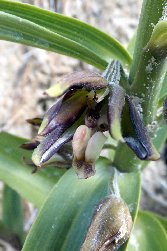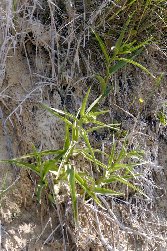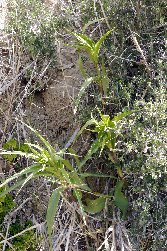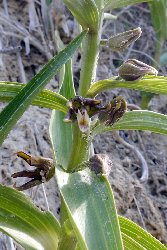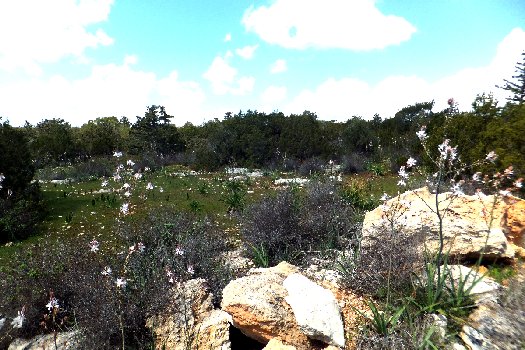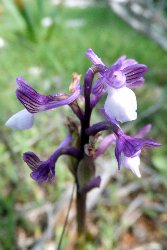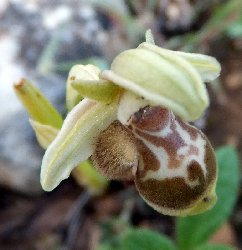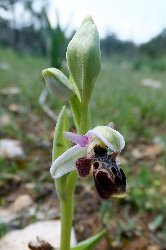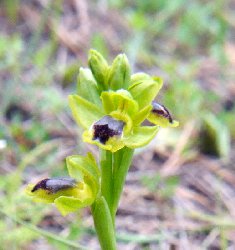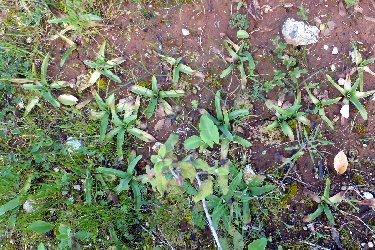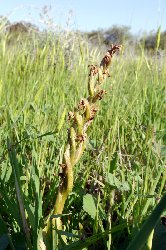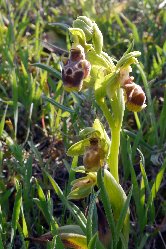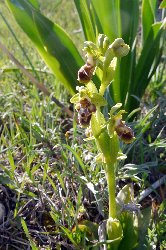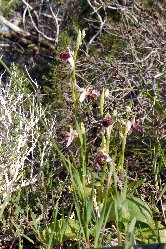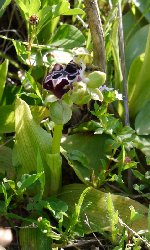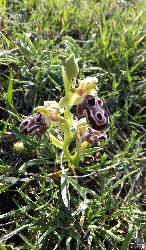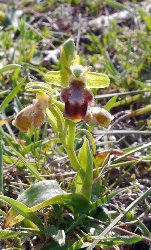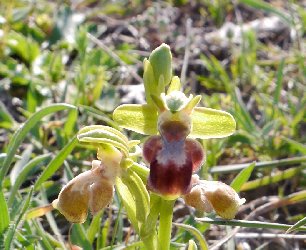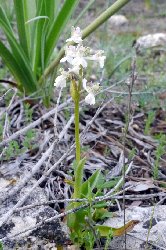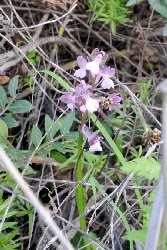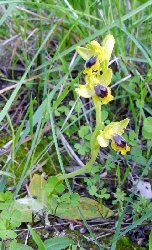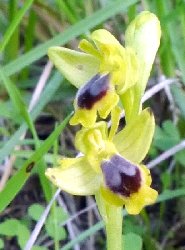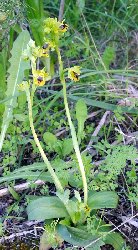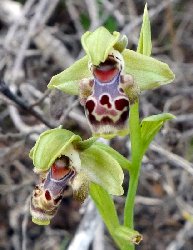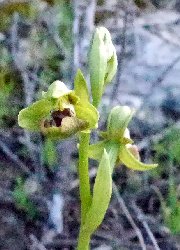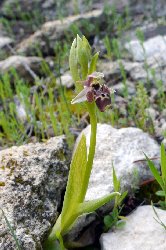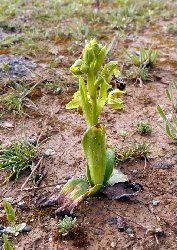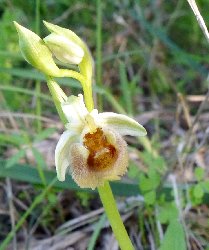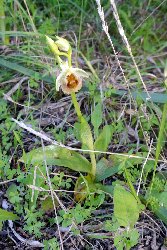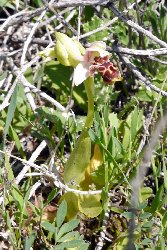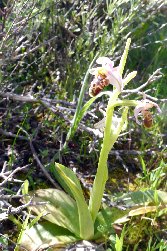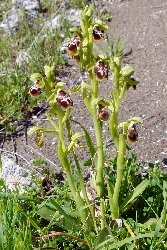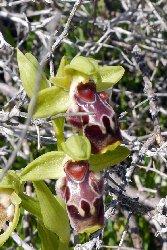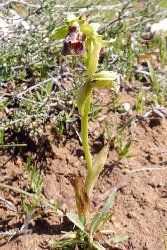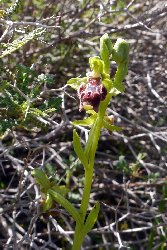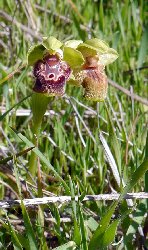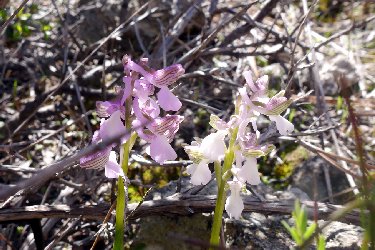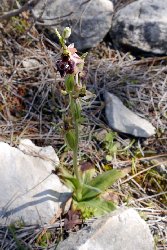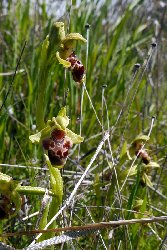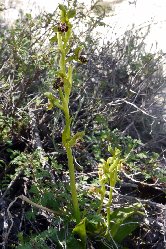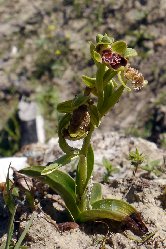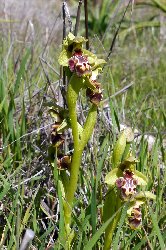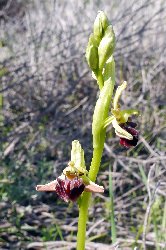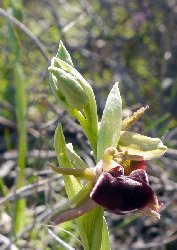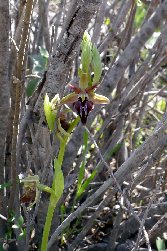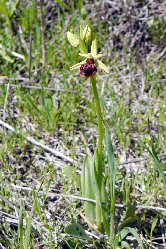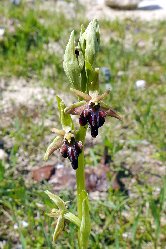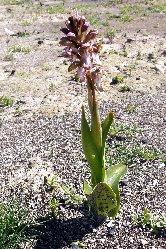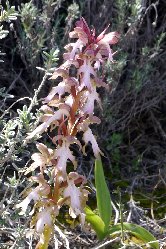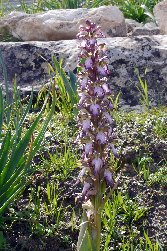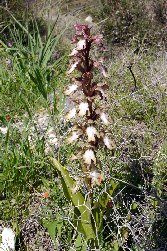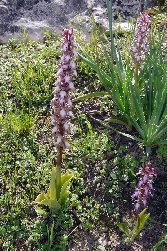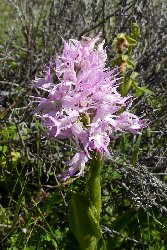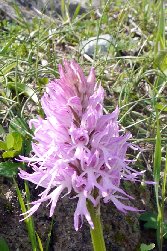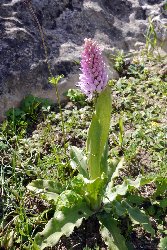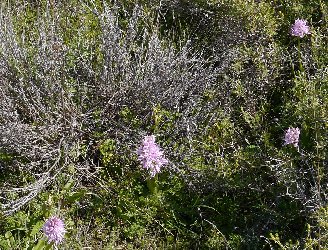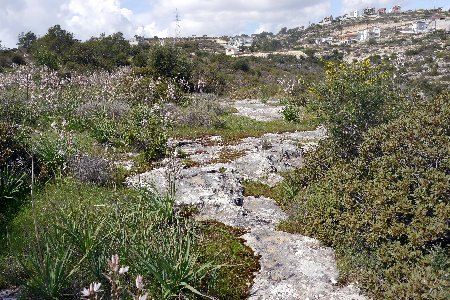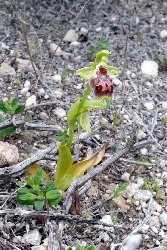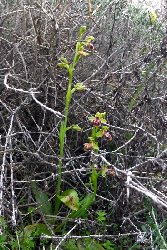|
|
|||||||||||||||||
|
|
|||||||||||||||||
 |
|
On a limestone roadside cutting below the British forces barracks grows the only known Epipactis veratrifolia outside the Troodos area growing on Cyprus. Growing at an altitude of 80 metres means that it is just beginning to flower during March, as opposed to May or even later in the mountains. This makes the plants here minor celebrities. Even so there was only one flower open, but that is good enough for me!. I have read that the group suffered a few years ago when the cutting was `cleared up' (presumably so the drainage channel for the road didn't get clogged), but we counted a healthy 13 spikes, all with buds, so it seems to be thriving and has the potential to recover. The flowers themselves look quite evil with the sinister deep violet pigments and those basal swellings on the epichile. Temple of Apollo 14th March 2017 Akrotiri, 14th March 2017 This site is referred to a being south of the Akrotiri Salt Lake, so after parking by the experimental agricultural station we started looking in the waste ground the other side of the road, and were a bit disappointed. It wasn't until we moved up the slope, through the shrubs, and onto the flatter area alongside the road entrance to the air base that we found orchids in numbers. Sadly, the spot also acted as a dump for some rubbish.
The gem was of course the Ophrys kotschyi, a very striking appearance, but a surprisingly short species almost lost in the grass; at least that goes those I saw here. And there was a mystery orchid that I am tempted to name as a hybrid. I will tentatively hazard a guess that it is O. flavomarginata x O. iricolor (or O. israelitica). While having the general form of flavomarginata the lip is quite atyical and has the typical patterning of one of those other two. The sepals do not seem quite flavomarginata either. It is a toss-up as to whether there is the W marking that shows up so well on O. israelitica.
Near Kourion, 14th and 17th March 2017 There is a 2 mile stretch of the B6 road between the ruins of Kourion stadium and the Episkopi barracks with light pine woodland bordering the landward side of the road. This covers the area near the Temple of Apollo, but that was a quite different habitat. However, despite searching at both ends of the woods it was largely a case of usual suspects again. Kantou to Souni road, 15th March 2017 We stopped a couple of miles north of the village of Kantou. On the right was a patch of little used ground begging for an orchid search. I say little used, but it seems to have been a favourite place for fly-tipping. Nevertheless there were orchids; a confusing array of Ophrys species and more Orchis collina post flowering (altitude 110 metres). I have tried to apply Christofides' identification key to the Ophrys and still have 3 specimens, subtly different from each other, that I cannot identify but may just be Ophrys flavomarginata. However one suggestion was O. flavomarginata xO. alasiatica.
Kantou to Sofira road, 15th March 2017 Another couple of miles in a different direction out of the village, and this site provides more variety of habitat. The southern side has both neglected olive grove and fire damaged ground, while across the road are terraces disappearing down into the valley. We only explored the top of this area - it would be so easy to put a foot wrong and that valley was both steep and deep. Shame because there may have been more to see. The altitude is around 185 metres.
The fire damaged area was quite extensive and recent, but seems not to have affected the Giant Orchid, Barlia robertsiana. Some of these were coming up in areas of bare earth. But there were more examples on the limestone terrace side, with pink colours and a sort of washed-out olive colour to the petals and sepals. Another discovery was an Orchis species in bud on the wooded side. The pink flower buds and the wavy edges leaves meant Orchis italica, proved across the road where most were looking magnificent in full flower.
Apesia 14th March 2017 With a bit of time on our hands there was a chance to check out further sites in the Limassol hinterland. After negotiating the traffic leaving and getting onto the A6 we headed north a bit and then east to arrive at Apesia, another of those villages where there is only room for one vehicle along the main street. I wasn't quite sure whether we pulled up at the right spot, with phone maps not working, but in retrospect we were, or at least very close. However after finding just scattered examples of O. attica it stated to drizzle, and then soon pour down. We sat in the car for a while, but it looked as if the rain would continue somewhile. So a bit of on-the-hoof rescheduling of the following day could see a return here.
|
|
|
||||||||||||||
